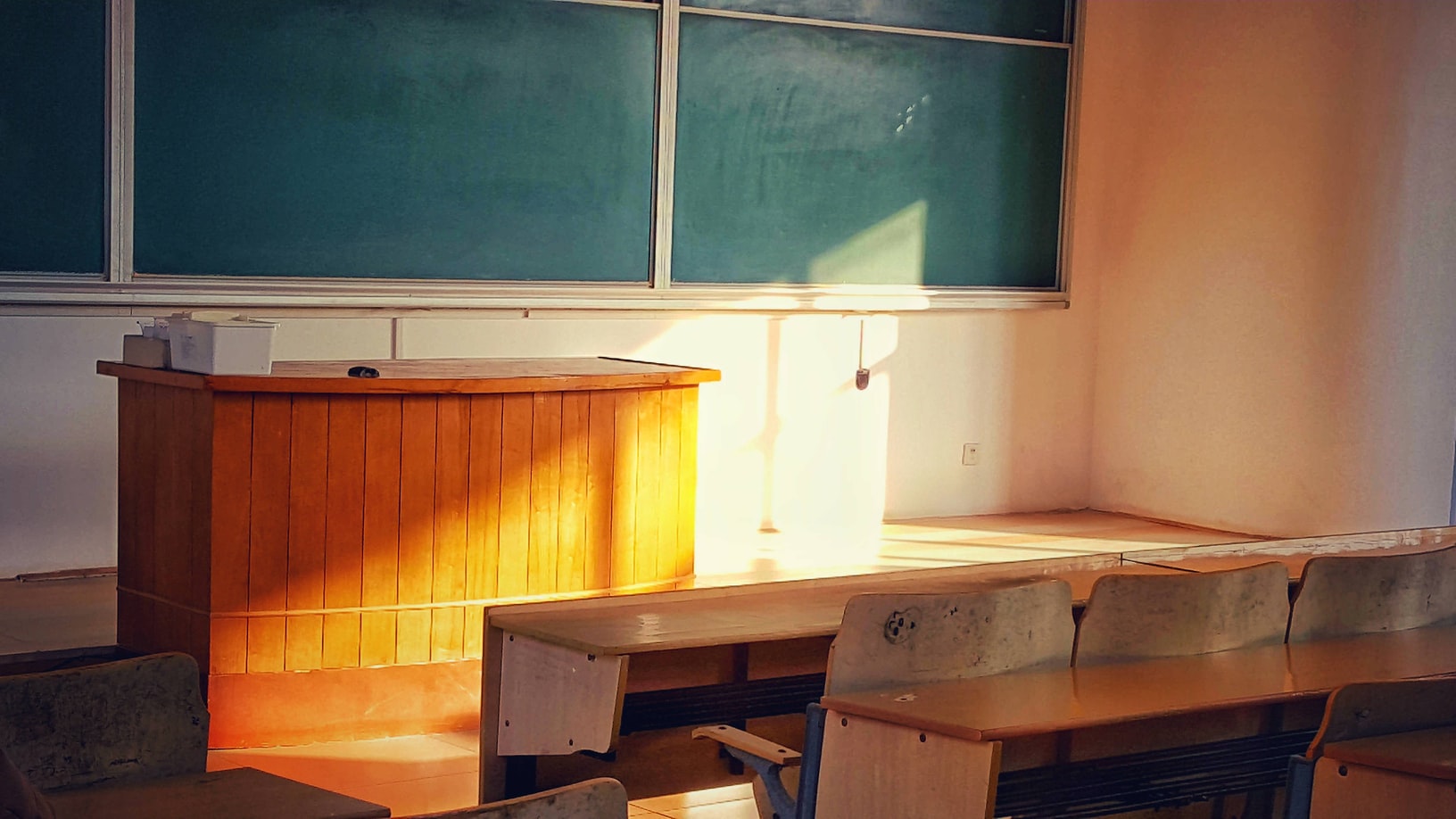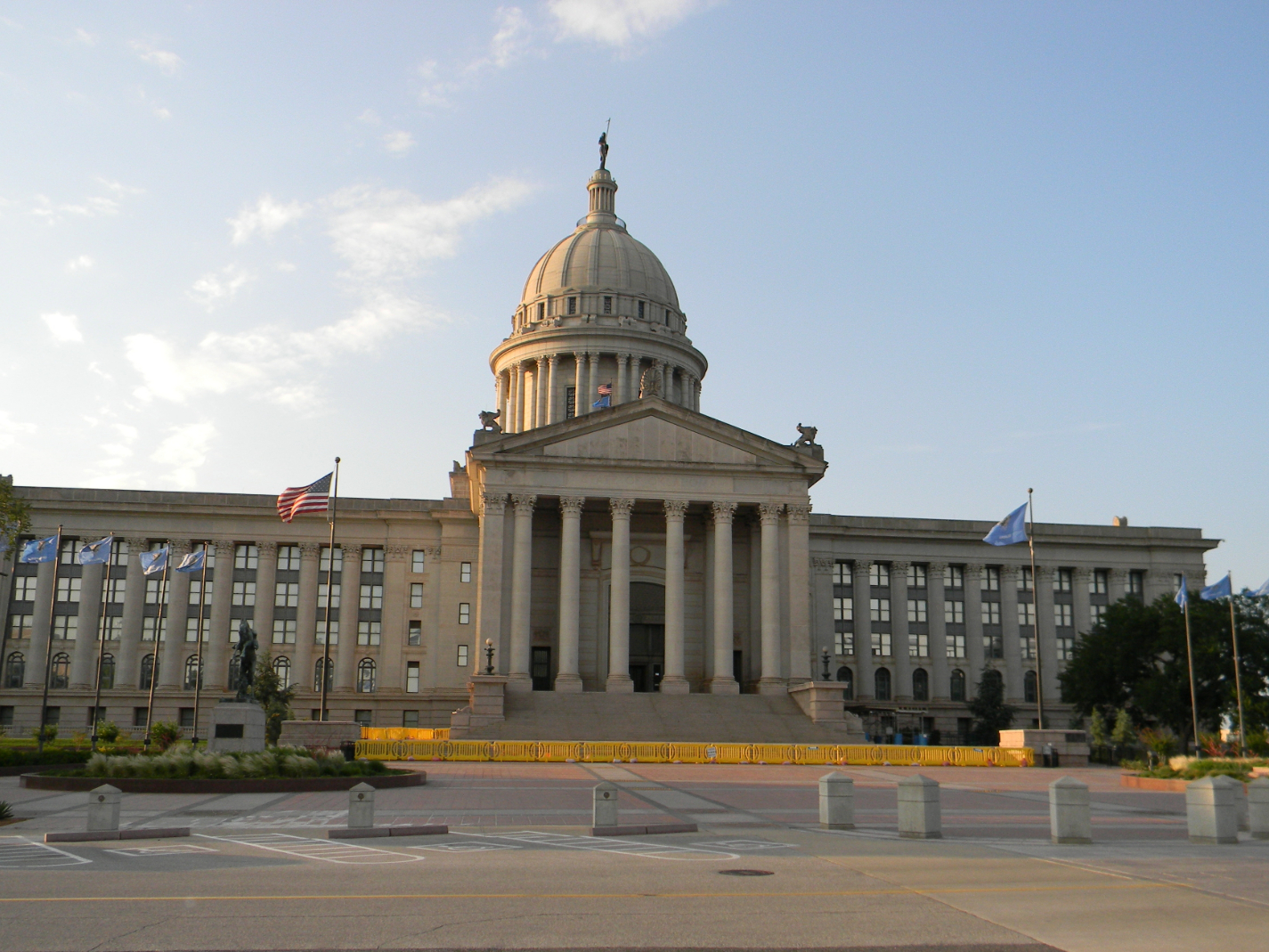More than half a century ago, the not-yet-Thomist philosopher Alasdair MacIntyre offered a “doom-laden” depiction of modern education. Noting that our educational system reflects “the moral content of our society,” MacIntyre asserted that modernity is obsessed with “getting on.”
One gets on from one stage to the next on an endless conveyor belt. One goes to a primary school in order to pass the eleven plus in order to go to a grammar school in order to go to a university in order to get a degree in order to get a job in order to rise in one’s profession in order to get a pension. And those who have fallen out are not people who have found a true end; they are mostly people who have got off, or have been pushed off, the conveyor belt.[1]
MacIntyre’s words reflect a growing disillusion with modern education. Critics have long argued that our meritocracy doesn’t live up to its noble aspirations. Now, the very ideal of meritocracy has come under fire. In The Cult of Smart, Freddie deBoer decries our self-deceiving obsession with intelligence as a stand-in for value—which is deceptive, he argues, because academic ability is unequally dispersed. Not everyone can succeed in college. Likewise, in The Tyranny of Merit, the political philosopher Michael Sandel describes our meritocracy as “credentialist,” harmful even to those who succeed, to say nothing of those who fall off MacIntyre’s proverbial conveyor belt.
If we aspire to self-rule—not dependence on autocrats for political order or landed gentry for economic survival—education inevitably plays a central role in our political life. It should be a public education that empowers the common person in the project of self-government.
These authors crystallize a widespread unease. On one hand, many people experience education as a frenzied series of benchmarks: to get good grades, to score well on tests, to finesse admissions essays, to get into top schools, to repeat the grade-test-finesse cycle for a good job or more degrees. On the other hand, the exact goal of this education is vague. The grades, test scores, the bottom rung of a career ladder—they often seem to be the point.
Our education system does, however, advance an implicit goal, one that goes hand-in-hand with the absence of a declared telos. That goal could be described as therapeutic—whatever affirms one’s inward self-understanding. College has, after all, come to be seen as a primary means by which to “find yourself” and to advance toward any possibility, any career, whatever you’ve always dreamed to be. In light of this aim, we believe that public education has lost its way.
The therapeutic aim stands in contrast with the proper goal of public education, which we might call the republican aim. If we aspire to self-rule—not dependence on autocrats for political order or landed gentry for economic survival—education inevitably plays a central role in our political life. It should be a public education that empowers the common person in the project of self-government.
The Promise and Peril of Public Education
In light of its republican aim, public education ought to serve at least two functions. The first is political, a training in the liberal arts or the art of being free. Today many define freedom as merely the absence of constraints—the freedom to do what you want. An older understanding, from which the liberal arts tradition emerged, equates freedom with the capacity for responsible self-rule. Far from being the emancipation from constraints on one’s desires, freedom in this older sense involves an emancipation from those desires. As such, freedom must be learned.
Herein lies the political impetus for the liberal arts. We become free through taught habits and dispositions that empower us to govern ourselves. They are inculcated through both a reverence for the past and the specific wisdom of that older tradition of liberty. Thus, the liberal arts resist the input-output model of education, schooling as a means to the next stage.
Second, public education should serve a practical function, as preparation for becoming a contributing member of one’s community. To be productive, one must be proficient in certain skills. It’s hard to excel at any role, at work or in the home, if you can’t read or write. Most occupations require particular talents that must be learned and practiced. Such training was traditionally contrasted with the liberal arts and referred to as a “servile” education—training which is not an end in itself. It is, after all, meant to follow the input-output model.
We become free through taught habits and dispositions that empower us to govern ourselves. They are inculcated through both a reverence for the past and the specific wisdom of that older tradition of liberty.
However “servile,” this education is neither inferior or unnecessary. It complements the liberal arts, presupposing that everyone can contribute and that they should be empowered to do so. It is a part of a cohesive public education that cultivates not only able workers and parents but also self-governing citizens, capable of supporting themselves and their families.
The republican aim of public education has, however, been gradually overcome by the therapeutic. As MacIntyre explained, the moral content of our educational system reflects the moral content of society, which he describes as fundamentally utilitarian. We are incapable of agreeing on ends, so we instead appeal to placeholders such as “the greatest good” or “public welfare.”[2] Many of our most dominant moral assumptions—the background premises to which we can appeal when making public arguments—reflect this ostensibly mandatory silence on ends. And these assumptions help explain how college has become a cultural obsession.
Our public arguments frequently fall back on an appeal to expertise, effectiveness, and professional technique—what Darel E. Paul calls “managerialism.” Paul writes:
Managerialism sees society as a collection of organizations. Those organizations are themselves made up of smaller organized groups down to the basic group units of society. Not only does each group require internal management to realize its goals; the entire society does as well. Any positive order reached spontaneously through the interactions of individuals and groups is either impossible or inefficient. Positive order must be intentionally produced through expert managerial technique. In fact, this is the way all organizational goods are realized.
This is no mere deference to expertise on narrow questions of scientific inquiry. Rather, managerialism entails the delegation of common responsibility to a managerial class, reducing normative judgement to an ostensibly neutral positive measurement.
Equal in its cultural sway is what Carl R. Trueman and others have called “expressive individualism.” Drawing from the work of Philip Rieff, Trueman shows how our culture valorizes the individual’s deeply felt sense of identity. This tendency is fundamentally therapeutic, calling for not only the acceptance but the affirmation of each person’s inward sense of self. Expressive individualism makes former Supreme Court Justice Anthony Kennedy’s evergreen maxim of modern freedom both plausible and compelling: “At the heart of liberty is the right to define one’s own concept of existence, of meaning, of the universe, and of the mystery of human life.”[3]
Both moral paradigms share an ostensible neutrality. Managerialism falls back on expertise and science. Expressive individualism valorizes personal choice and demands that institutions remain silent on the mystery and meaning of life. They promote the ideal type of the unconstrained individual, creating policies that remove constraints. Ultimately, managerialism and expressive individualism are but two sides of the same coin. The removal of constraints warrants an expansive managerial apparatus; the apparatus enables the removal of constraints. Those who embrace most fully the values of expressive individualism are likely to be the best managers, with only loose attachments.
Ultimately, managerialism and expressive individualism are but two sides of the same coin. The removal of constraints warrants an expansive managerial apparatus; the apparatus enables the removal of constraints.
These complementary paradigms provide the rationale for our fixation on college. According to managerialism, the tracked life, the “conveyor belt,” is a laudable goal. Higher education functions as a pipeline to the professional-managerial class, the means by which bureaucratic expertise is disseminated. Meanwhile, college is the perfect rite of passage for the expressive individual, as students are told to find themselves and go as far as their dreams will take them. A university education is buttressed by, and further disseminates, both moral assumptions. It should be no surprise that diversity, equity, and inclusion (D.E.I.) efforts—which harness a bureaucratic apparatus and emphasize individual identity—have become ubiquitous and extensive at universities across the nation.
College for All
The essential value of a college degree remains almost unquestionable in our political culture, bolstered by years of rhetoric that portrayed the degree as a symbol of upward mobility. In a 2014 speech, then President Obama reiterated that “where you start should not determine where you end up.” In the next breath, he equated this with college: “And so I’m glad that everybody wants to go to college.” The previous year, at a middle school, the president echoed what Michael Sandel calls the “rhetoric of rising.” He emphasized equality of opportunity, of unlimited possibility for those who worked hard enough: “We’ve got to make sure that our young people—all you guys—have every tool that you need to go as far as your talents and your dreams and your ambitions and your hard work will take you.”
Later, Obama asked the audience, “How many students here expect to go to college?” To the adults, he commented, “I expect all of them to raise their hand.”
For years, this fixation on college preparation has led educators to emphasize testing and narrow academic achievement. In its most extreme forms, schools resemble Frederick Winslow Taylor’s early 20th-century managerialism. Taylor took on the project of “classifying, tabulating, and reducing this knowledge to rules, laws, and formulae,” so as to achieve maximal efficiency. Schools often replicate this model, reducing teaching to an input-output sequence and assessing learning by a few measurable indicators.
This is precisely the approach of many “no excuses” schools, which take our college-or-bust public rhetoric to its logical extreme. If one’s only shot at a good life comes through college, schools ought to do everything they can to ensure the best test scores—controlling students’ every movement for the sake of efficiency, so not a minute goes to waste. A training video from the Relay Graduate School of Education, for instance, shows a teacher guiding her students from their seats to a shared table, numbering each of their movements. When she says “one,” they scoot their seats back; at “two,” and they stand; at “three,” they step to the right. The trainer notes the teacher’s hyper-efficiency with approval; this teacher broke each step down to “the smallest chunk possible.”[4]
But the narrow focus on achievement and efficiency hardly ends once students enter college. Instead, they enter a credentialing arms race that only entrenches class divides and further engenders status anxiety. Our degree-driven meritocracy, Michael Sandel argues, never displaced a system which disperses power and wealth unevenly. Instead, it merely justified unequal distribution by rewarding personal achievement, narrowly defined by academic performance. Meritocratic winners thus feel a sense of hubris, that their wealth and power have been duly earned, while the losers are further stigmatized as backward-looking, having ultimately not tried hard enough or moved to take the right opportunities.
Merit, narrowly defined, even tyrannizes those attending elite schools and employed in elite careers. As Tocqueville described, the promise of mobility encourages the anxious desire to endlessly distinguish oneself—particularly among the winners, who have achieved the most and thus have the most to prove and to lose. Sandel observes this of his own students at Harvard, who clamor for academic and extracurricular distinction. These students would likely find themselves nodding along to MacIntyre’s description of the “endless conveyor belt.”
Merit, narrowly defined, even tyrannizes those attending elite schools and employed in elite careers. As Tocqueville described, the promise of mobility encourages the anxious desire to endlessly distinguish oneself—particularly among the winners, who have achieved the most and thus have the most to prove and to lose.
As the selective promise of mobility has been realized, it has created geographic sorting based on educational attainment. As William Bishop notes, “People with college degrees were relatively evenly spread across the nation’s cities in 1970. Thirty years later, college graduates had congregated in particular cities, a phenomenon that decimated the economies in some places and caused other regions to flourish.” Students who are bright, good at school, and ambitious are often pushed toward elite higher education. While some might feel local attachment or pressure from family to stay nearby, these students at least face the background noise of credentialism, fortified by movies that portray the four-year degree as a ticket to success and public policy that prioritizes college. Such headwinds push these students to go to flagship state schools or even elite private colleges.
College thus serves as the pipeline into the professional-managerial class. Beyond their field of study, students are acculturated in the language and mannerisms of this class. They are carefully sorted and ranked by admissions officers and registrars as much as by corporate recruiters and HR performance evaluators. Even the college lifestyle prepares students to live as single people in tiny apartments in New York, Austin, or the Bay Area. For small town kids, this is the pipeline into the professional-managerial class. The process amounts to what Patrick J. Deneen calls educational “strip mining”—natural resources plundered, small towns and cities deprived, resources diverted to far-off cities.[5]
Despite its manifold failures, college has long been treated as a policy solution to the problem of poverty and inequality. Until recently, charter schools received bipartisan support as a fix to our educational woes, and many of the largest charter networks embraced a college-centered mission. The Uplift Education network, one of the largest in the nation, intends for “70% of all our graduates to earn a college degree within 6 years of high school graduation.” IDEA Public Schools surpasses that goal: “From Pre-Kinder to 12th grade, IDEA Public Schools is focused on sending 100% of our kids to college.”
This is ironic—if not pernicious—because instead of helping the ordinary American, it presupposes that everyone should instead scramble for the best available opportunity, “as far as your talents and your dreams and your ambitions and your hard work will take you.” Rather than bolstering the common person, the college-or-bust model gives license to scorn those “left behind.” Rather than providing the impetus for better working- and middle-class jobs and more power for those without college degree, it sets up a status pyramid scheme, where those who attend the best schools gain, while the late arrivers are told to buy in at high cost, motivated by an empty promise that their degree is of comparative value.
Opportunity Pluralism or Imago D.E.I.
Of course, our modern education system has drawn its fair share of critics. Instead of the “rhetoric of rising,” a growing number of education leaders on the left embrace an idiosyncratic notion of “equity,” defined in contrast with equality of opportunity. Instead of a “no excuses” approach—which emphasizes high standards and strict discipline—many reformers denigrate standards as fundamentally unfair.[6] With these critiques entering the mainstream, one might expect college itself to be the subject of similar suspicion. The veneration of college has, however, remained largely unquestioned. In the lead up to the 2020 election, leaders on the left quibbled over the details of a “college for all” agenda. Meanwhile, activists on the right have recently rallied around the ideal of meritocracy, leaving credentialism unquestioned.[7]
Through all of this, the republican aim—the goal of empowering common people—is simply eclipsed. Facing the onslaught of the meritocratic scramble, the liberal arts are relegated to the goals of that arms race. As a result, schools and universities treat traditional liberal arts as if they were, in some sense, servile in nature—one input in a college application, a box to check. Ironically, elevating the “servile” arts—through, for instance, offering more pathways to the trades—might aid in the revival of the liberal arts. It would at least reaffirm that some things are worth learning for their own sake. They don’t exist to help you “get on.”
Through all of this, the republican aim—the goal of empowering common people—is simply eclipsed. Facing the onslaught of the meritocratic scramble, the liberal arts are relegated to the goals of that arms race.
Our public education system would benefit from pursuing what Joseph Fishkin has called “opportunity pluralism,” an alternative to our narrowly conceived equality of opportunity. Instead of striving for equal access to the single pathway of college, opportunity pluralism would ensure robust opportunities along a diverse set of pathways. College would be one of many good options—not the only good option, for those who can make it. This offers a promising alternative to the chaos of our current educational system. It also fits with that republican aim of education.
It is healthy to have a plurality of types. It is good for a political community to empower its people who work in unpretentious settings, solving practical problems, even perhaps with their hands. Yet our public education system doesn’t support this kind of pluralism. Rather, we push everyone to college, foisting the therapeutic aim on everyone. It’s a system designed to shape people in the likeness of the unconstrained individual, the manager—imago D.E.I. We should hope for more.
John Sailer is a research associate at the National Association of Scholars. Bruno V. Manno is senior advisor for K-12 education at the Walton Family Foundation (the views expressed in this piece are not necessarily those of the Foundation).
Editor’s Note: This article was originally published by The American Compass on December 6, 2021, as part of its essay collection Failing on Purpose: How We Forgot What Public Education is For. It is republished here with permission.
Image: Barry Zhou, Public Domain



